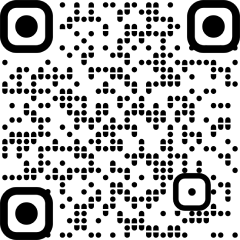
By Prabhat Prakash and Shilpasree Mondal
New Delhi: Medical imaging is evolving at a fast pace and newer digital radiography solutions are gaining traction with improved image quality, speed along with other aspects that permit healthcare professionals to utilise artificial intelligence (AI) for accurate diagnosis. Even though such digital solutions are essential, what becomes equally important is that technicians and radiologists are well equipped to take advantage of such advancements.
To address the role of digital radiography solutions in advancing cancer care and improving diagnosis, the fourth edition of the ETHealthworld Leaders Summit 2024, curated a fireside chat on ‘Revolution of DR solutions in Medical imaging: Impact in patient care‘. The participant for the chat included, Dr Sanjay Dhawan , Group Director, Head of Diagnostics, Radiology & Imaging Paras Health; Dr JP Singh , Associate Director, Medanta, The Medicity Hospital;
Nikhel Goyal, Country General Manager, India Cluster Carestream and Dr Aakaar Kapoor
CEO & Lead Medical Advisor, City X-Ray & Scan Clinic Pvt Ltd. The fireside chat was moderated by Dr Shelly Mahajan, Lab Director & Clinical Lead – Genomics, Mahajan Imaging and Labs.
Initiating the conversation Dr Dhawan, said, “It is very much like shifting from a traditional camera to a digital camera-this complete shift of transformation has widely revolutionised radiology.” Dr Dhawan explained that although images are still images, they have moved to data, which enables many advances, such as teleradiology, data mining, machine learning, artificial intelligence (AI), etc. Such changes open the way towards better analytical capabilities and better patient care in medical imaging.
“Just like everything changed with the shift from film camera to digital camera, which up to some extent has changed the whole scenario for radiography, so is the case with digital radiography, which is changing the way of radiography, too,” said Dr Singh. He further elaborated that AI in modern radiology plays a very important role in improving the accuracy and providing quicker and more accurate diagnoses while streamlining all the workflows.
“The day will come when a future radiologist won’t even recognise the term film, just like today’s kids do not know what a film camera is,” said Goyal.
AI enhances the flow of diagnosis by pointing out the subtlest anomalies and helps specialists in reaching decisions quicker which has a final impact on patient care. Specialised software applications, for instance, ICU, focus on identifying certain conditions. With the aid of such programmes, doctors focus on cases that require scrutiny. This expedited the diagnostic process and increased accuracy in the identification of cases requiring further investigation.
“AI recognises anomalies in the entire process, allowing radiologists to grade a case as normal or for further investigation much quicker, really improving diagnostics quality,” said Dr Kapoor.
“In times of COVID, we deployed AI-based software that could differentiate between patients with normal conditions and those with COVID pneumonia through an analysis of chest X-rays, resulting in the detection sensitivity jumping from 65 per cent to 82 per cent,” he added.
“Automation and digitisation have altered the ways of radiology. Radiology is done in such a way where the scan can be cross-checked easily, which indeed would help save the patient.”
Dr Singh highlighted that earlier radiologists spent hours in dark rooms processing films; now with automation and digitisation, scan times are faster, and the workflow is much more efficient.
“AI is going to be the future,” said Dr Dhawan, “AI is a word or a phrase which has been wrongly made. It is more of practical application rather than artificial, and secondly, it is deep learning. In a country as large as ours, AI can help save lives by diagnosing critical conditions like intracranial haemorrhage from CT scans, even in areas without available radiologists.”
“Digitisation has improved patient care by leaps and bounds, the time it used to take for decision-making has come down. With advancing technology in digital radiology, the time needed for an image is drastically less. A portable X-ray, which used to take 15 minutes, can be done in just two minutes now. The image itself would appear on the system in seconds. These images can thus be immediately accessed by clinicians in the ICU or ward on the machine’s screen, with appropriate conditions for immediate critical conditions such as pneumothorax. Digitised CT and MRI scans have images ready for PACs as soon as the patient leaves the scanner.” said Dr Singh.
“There is a need to give proper training to the technicians in the handling of advanced radiology equipment, especially learning different solutions, including AI features, can make a real difference in terms of workflow. Such training is provided by programmes like the Carestream Radiographer Orientation Programme. Further, each time radiologists enter practice, they are confronted with the overwhelming task of dealing with machines as well, and therefore appear to need a collaboration with industry at their education level. With the increasing medical legal issues in imaging, a radiologist needs to understand data privacy as well as the rights of patients, especially in this century of digitalisation and cloud storage,” said Goyal.
“Teleradiology will enable us to visualise images acquired in smaller cities from larger ones, thus bringing specialist opinions closer,” concluded Dr Singh.




